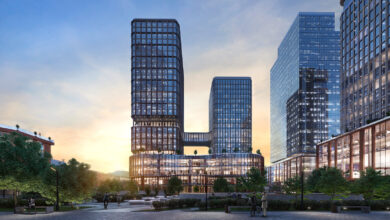101 Siding: Everything You Need to Know
If you’re considering updating the exterior of your home, one of the first things to consider is your siding. Choosing the right siding can improve your home’s curb appeal, increase its value, and provide protection from the elements. In this article, we’ll discuss everything you need to know about 101 siding. Ну а подробнее про 101 Siding Вы можете почитать на сайте: 101siding.ru
What is Siding?
Siding is the material that covers the exterior walls of a building. Its primary purpose is to protect the structure from the effects of weather and provide insulation. Siding comes in various materials, styles, and colors to suit different architectural styles and personal preferences.
Types of Siding
There are several types of siding materials to choose from, each with its own benefits and drawbacks. The most common types of siding include:
1. Vinyl Siding
Vinyl siding is a popular choice for many homeowners due to its affordability, low maintenance, and durability. It comes in a variety of colors and styles, making it easy to customize the look of your home. However, vinyl can fade over time and may crack or warp in extreme weather conditions.
2. Wood Siding
Wood siding gives a classic, natural look to a home and can be painted or stained to match your desired aesthetic. However, wood siding requires regular maintenance, including staining or painting every few years to prevent rot and decay.
3. Fiber Cement Siding
Fiber cement siding is a durable and low-maintenance option that can mimic the look of wood or stucco. It is resistant to insects, rot, and fire, making it a popular choice for many homeowners. However, fiber cement siding can be more expensive than other options.
4. Aluminum Siding
Aluminum siding is lightweight, durable, and easy to install. It comes in a variety of colors and styles and is resistant to rust and pests. However, aluminum siding can dent easily and may require repainting over time.
5. Brick Siding
Brick siding is a timeless and durable option that adds a classic look to any home. It is resistant to fire, pests, and harsh weather conditions, making it a long-lasting choice. However, brick siding can be expensive and may require professional installation.
Factors to Consider When Choosing Siding
When choosing siding for your home, there are several factors to consider:
1. Climate
Consider the climate of your area when choosing siding. Some materials may be better suited to hot, dry climates, while others may be more suitable for cold, wet climates.
2. Maintenance
Consider how much maintenance you are willing to do to keep your siding looking its best. Some materials, like vinyl, require minimal maintenance, while others, like wood, require regular upkeep.
3. Cost
Consider your budget when choosing siding. Some materials, like vinyl or aluminum, may be more affordable than others, like brick or fiber cement.
4. Aesthetics
Choose a siding material that complements the architectural style of your home and fits your personal preferences. Consider the color, texture, and style of the siding to achieve the desired look.
Benefits of Siding
There are several benefits to installing new siding on your home:
1. Improved Curb Appeal
New siding can enhance the appearance of your home, increasing its curb appeal and making it more attractive to potential buyers.
2. Increased Energy Efficiency
Insulated siding can help improve the energy efficiency of your home, reducing heating and cooling costs and creating a more comfortable indoor environment.
3. Protection from the Elements
Siding provides a protective barrier against wind, rain, snow, and other elements, helping to prevent damage to the structure of your home.
4. Increased Property Value
Installing new siding can increase the value of your home, offering a high return on investment if you decide to sell in the future.
Choosing a Contractor
When installing new siding, it’s essential to choose a reputable contractor to ensure the job is done correctly. Look for a contractor with experience installing the type of siding you choose and check their references and reviews online. Get multiple quotes and compare prices, timelines, and warranties before making a decision.
Maintaining Your Siding
Once your new siding is installed, it’s essential to maintain it properly to ensure its longevity and appearance. Follow these tips to keep your siding in top condition: — Clean your siding regularly with a mild detergent and water to remove dirt, mold, and mildew. — Inspect your siding for cracks, gaps, or loose panels and repair them promptly to prevent water damage. — Trim trees and shrubs away from your siding to prevent damage from branches and debris. — Paint or stain your siding as needed to protect it from the elements and maintain its appearance. — Schedule regular inspections with a professional to check for signs of damage or wear and tear.
Conclusion
Choosing the right siding for your home is an important decision that can improve its appearance, value, and protection. Consider the factors mentioned above, research different materials, and consult with a professional to make the best choice for your home. With the right siding, your home will look great and withstand the elements for years to come.

